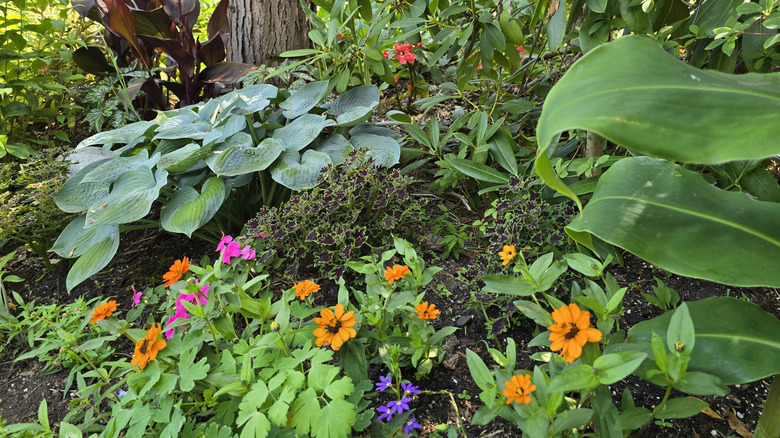The Classic Garden Beauty That Can Tolerate Shady Conditions
Few flowers evoke the look and feel of a classic English cottage garden quite like the striking common foxglove (Digitalis purpurea). With spikes of bell-like flowers reaching as high as 5 or 6 feet depending on the cultivar, foxgloves are perfect for creating a sense of vertical structure and interest in flowerbeds. Native to the woodlands of western Europe, where they grow in the dappled shade of forest clearings, these flowers are well suited to shade gardens. In particular, they tend to appreciate some respite from the hot afternoon sun. Their blooms are beloved by pollinators such as hummingbirds and butterflies, while their toxic properties make them flowers that repel rabbits and deer.
Although most foxgloves prefer partial shade rather than full shade, many cultivars are available, and some thrive a little better in deeper shade than others. One spectacular selection that might be particularly well suited to areas with heavy shade is 'Dalmatian Purple,' which boasts two-toned purple blooms. A hybrid, the Merton foxglove (Digitalis grandiflora x purpurea), may also fare particularly well in full-shade applications.
How to grow and care for foxgloves
Hardy in USDA Zones 4 through 8, foxgloves generally function as biennials – though with their tendency to reseed themselves year after year they may behave like short-lived perennials. As you might expect, you can easily propagate foxgloves from seed. In fact, if you want to control the population of your foxglove bed, you may want to deadhead the majority of the spent blooms before they can drop additional seeds. O
nce the seeds have dropped, you can remove the remaining vegetation to reduce visual clutter. Most varieties will not flower until their second year, with the exception of the 'Foxy' cultivar, which can usually be relied upon to produce flowers quickly. Foxgloves are fairly low-lift plants as long as they're provided with well-draining, moist soil that is never allowed to dry out completely — extended drought can have a negative impact on how well they flower. They do have a slight preference for acidic soil rich in organic matter, but they are also quite adaptable.
You generally won't have to worry about many pests or diseases, though you may have to contend with aphids or powdery mildew. One thing that bears repeating: All parts of foxgloves are extremely toxic when ingested by humans or pets, making them potentially dangerous plants. So make sure you keep an eye on children and other potential nibblers.

